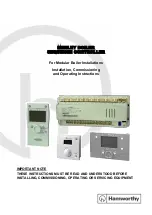
NUC970 Technical Reference Manual
Publication Release Date: Dec. 15, 2015
- 775 -
Revision V1.30
NUC97
0
T
E
CHNIC
A
L
RE
F
E
RE
N
CE
MA
NUA
L
monitors this dominant bit, although the CAN bus may remain in recessive state. The Silent Mode can
be used to analysis the traffic on a CAN bus without affecting it by the transmission of dominant bits.
The following figure shows the connection of signals CAN_TX and CAN_RX to the CAN Core in Silent
Mode.
C_CAN
= 1
CAN_TX
CAN_RX
CAN_Core
Tx
Rx
Figure 5.24-2 CAN Core in Silent Mode
Loop Back Mode
5.24.6.2
The CAN Core can be set in Loop Back Mode by programming the Test Register bit LBack to one. In
Loop Back Mode, the CAN Core treats its own transmitted messages as received messages and
stores them in a Receive Buffer (if they pass acceptance filtering).Figure 5-78 shows the connection of
signals, CAN_TX and CAN_RX, to the CAN Core in Loop Back Mode.
C_CAN
CAN_TX
CAN_RX
CAN_Core
Tx
Rx
Figure 5.24-3 CAN Core in Loop Back Mode
This mode is provided for self-test functions. To be independent from external stimulation, the CAN
Core ignores acknowledge errors (recessive bit sampled in the acknowledge slot of a data/ remote
frame) in Loop Back Mode. In this mode, the CAN Core performs an internal feedback from its Tx
output to its Rx input. The actual value of the CAN_RX input pin is disregarded by the CAN Core. The
transmitted messages can be monitored on the CAN_TX pin.
Loop Back Combined with Silent Mode
5.24.6.3
It is also possible to combine Loop Back Mode and Silent Mode by programming bits LBack and Silent
to one at the same time. This mode can be us
ed for a “Hot Selftest”, which means that C_CAN can be
tested without affecting a running CAN system connected to the CAN_TX and CAN_RX pins. In this
mode, the CAN_RX pin is disconnected from the CAN Core and the CAN_TX pin is held recessive.
The following figure shows the connection of signals CAN_TX and CAN_RX to the CAN Core in case
















































